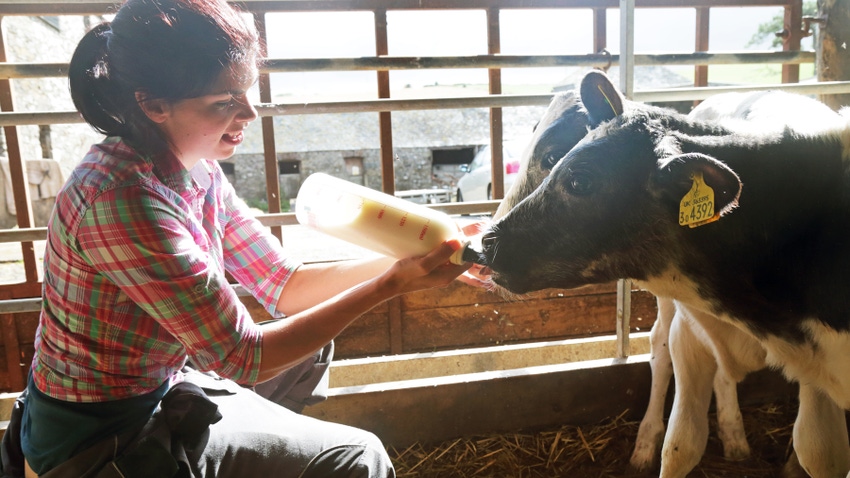February 9, 2023

by Ryan Sterry
The importance of colostrum is no secret to dairy and livestock producers. Unlike many other species, the placenta of cattle prevents the transfer of antibodies from the dam to the calf in the uterus. Instead, calves must rely on colostrum, a cow’s first milk, to obtain antibodies from their mother. Failure to receive and absorb immunoglobulins from colostrum results in what’s called failure of passive transfer of immunity, or FPT.
There are direct links between FPT and increased calfhood illness and mortality. As stewards of animal welfare, a farm’s management and staff are responsible for ensuring all calves — whether a dairy replacement heifer, bull or dairy-beef crossbred calf — receive sufficient quantities and quality of colostrum on time.
A newborn calf’s small intestine can absorb the immunoglobulins contained in colostrum for only a limited time. Absorption rates begin to decline just four hours following birth. By 24 hours after birth, the intestinal wall closes, preventing absorption of immunoglobulins from colostrum. That leads us to goal No. 1: Calves should receive their first colostrum feeding within four hours of birth. A second colostrum feeding within 12 hours of birth is also advisable.
What about amount? The general recommendation is to feed 10% to 15% of the calf’s birth weight. Using back-of-the-envelope math: One gallon of milk weighs 8.6 pounds. For an 80-pound calf, that means about 1 gallon of colostrum is recommended. One gallon equates to 4 quarts, which is the commonly recommended feeding amount. That said, know your calf weights. For smaller breeds, adjust down. For larger calves, you should be adjusting upward.
Quality colostrum
Colostrum quality is another factor. Visual assessment can tell us a little, but not everything. Colostrum should be thick in consistency and yellow in color. Watery, bloody and manure-contaminated colostrum should be discarded.
To truly know quality, colostrum needs to be tested. Testing can be done with a colostrometer or Brix refractometer. Each tool has its pluses and minuses, as well as specific instructions for use. The take-home for now is that you want to feed high-quality colostrum, defined as greater than 50 grams per liter of immunoglobulins measured with a colostrometer, or 22% Brix or higher if measured with a refractometer.
There are options to work around poorer-quality colostrum. You can still feed it, but with the addition of a colostrum supplement product. Or you can feed a colostrum replacement product instead, or colostrum from another cow known to be high quality.
Now for upping your game. Recent research reveals that what was previously thought to be satisfactory for transfer of passive immunity in calves was insufficient. The success or failure of TPI in calves can be tested by measuring serum Immunoglobulin G (IgG) levels. This test can be done on-farm by collecting jugular blood samples from calves and testing the blood serum. Serum IgG tests give valuable information on the effectiveness of colostrum feeding protocols. Calves testing low for serum IgG are most likely either not receiving enough immunoglobulins from colostrum (an issue of quality and/or quantity) or not absorbing them (timing issue).
Historically, serum IgG levels greater than or equal to 10 were considered passing, and less than 10 was considered failing. The new standard uses four categories:
excellent at greater than or equal to 25 IgG
good at 18 to 24.9 IgG
fair at 10 to 17.9 IgG
poor at less than 10 IgG
What would have slipped by as just above passing a few years ago will now score you a letter grade D. Recent survey work by Extension educators in Wisconsin found all of the farms in the survey fed colostrum on time, but the amount and quality may have been too low in some cases.
There is good news: We already know how to meet the new standards for TPI. It is by being vigilant on monitoring colostrum quality.
Sterry is a regional University of Wisconsin Extension dairy educator for Barron, Pierce, Polk and St. Croix counties.
You May Also Like




